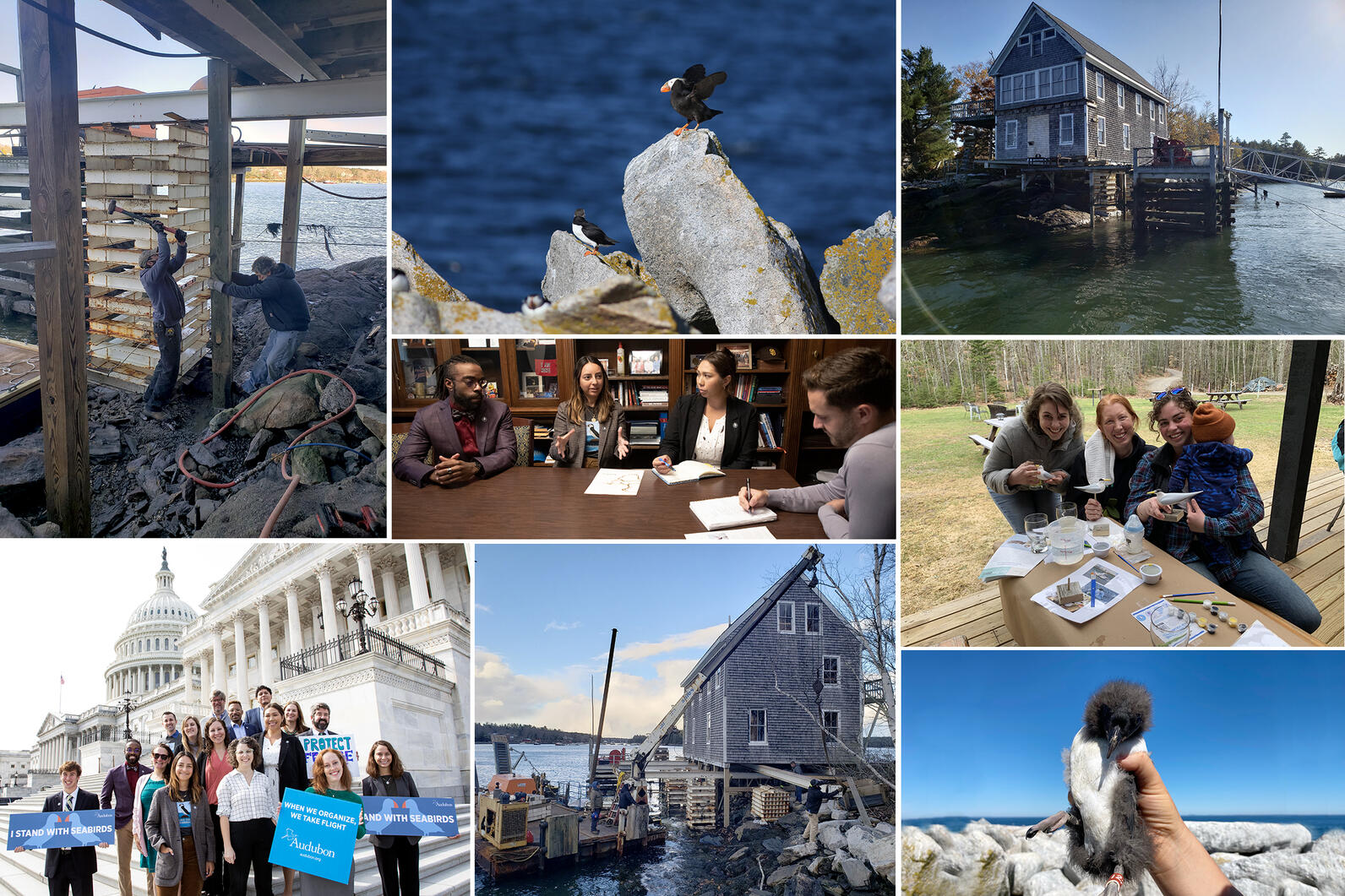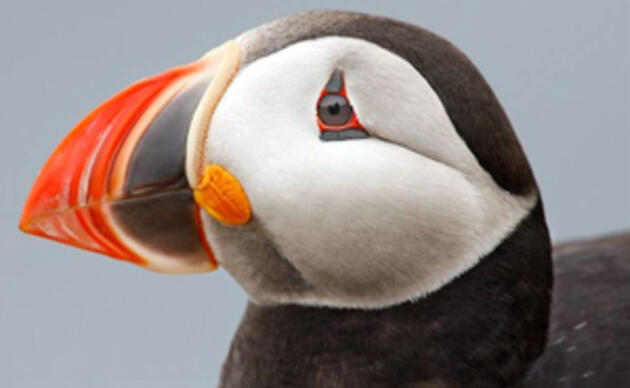2022 Seabird Institute Year in Review

We listened to what birds tell us about their changing world
After a nearly two-year marine heatwave in the Gulf of Maine, seabirds have displayed their remarkable resilience. Cormorants, puffins, terns, and other Maine seabird species had a largely successful nesting season in 2022, despite facing a new challenge, avian flu. With thanks to Seabird Institute biologists who worked diligently to isolate sick birds, catastrophic losses to avian flu, like those seen in some seabird colonies in Europe and elsewhere, were prevented.
Ensuring seabirds have access to adequate forage fish is a top priority in the Gulf of Maine. By studying puffin guano, we are learning about the food adult puffins need – previously we’ve only known what fish were fed to chicks. Our GPS tracking efforts expanded to include Leach’s Storm Petrels for the first time, and the widespread wanderings of this species filled the entire Gulf of Maine and beyond. Data from our tagging efforts are being used to ensure protections for important foraging areas, like the Northeast Canyons and Seamounts Marine National Monument, and to inform the siting of offshore wind turbines.
We saw sensational seabirds along Maine’s coast
Maine’s coast was abuzz in January when the wandering Stellar’s Sea Eagle, first spotted last fall in Alaska before traveling as far south as Texas, was frequently seen along the Gulf of Maine coast between January and early March. Another notable rarity visited Maine’s waters during the nesting season, a Tufted Puffin was spotted amongst its Atlantic Puffin counterparts. Lucky passengers on puffin tours were able to catch a glimpse during the bird’s stint at Eastern Egg Rock.
We shared our seabirds with new audiences, in new ways.
Back by popular demand, the pandemic web-programs “Making Bird Connections” and “Tern the Page” book club returned early in the year. During the peak summer season the Hog Island Audubon Camp and Project Puffin Visitor Center saw a return-to-normal, as COVID restrictions eased. New engagement programs, Sips & Seabirds and Puffin Palooza, were introduced and allowed us to share the miraculous stories of our beloved seabirds with a greater number of local residents and businesses.
We raised the iconic Queen Mary.
The massive effort to life and stabilize the iconic, Queen Mary building on Hog Island was completed in December. Threatened by structural issues and rising sea levels due to global warming, this project has been many years in the making. Beginning in October, the building was lifted using an integrated hydraulic jacking unit and a lattice of large steel beams. All new posts and braces were added with a lot of attention to ensuring it was fastened appropriately to the underlying ledge. The first week of December, the building was set down on posts to ultimately rest 3 ft higher than it was been for the last 170 years.
The Friends of Hog Island financially supported the entire cost of the complex permitting and lifting process and has been a champion partner to National Audubon in seeing this iconic building of the Maine coast preserved for future generations.
What comes next!
In 2023, we celebrate the 50th birthday of Project Puffin and launch the next 50 years of seabird conservation. What began as a dream on a single island in the Gulf of Maine continues to soar to new heights. Audubon’s Seabird Institute now has global reach, providing inspiration, expertise, and resources to projects benefiting seabird populations around the world.
Are you ready to join the fun? Tune in for Making Bird Connections, join the Tern the Page book club or come to Hog Island for an unforgettable service week filled with seabird science. More virtual and local programs are in the works, so stay connected!
Learn about birds and take action
Adopt-A-Puffin
Adopt now and receive: A Certificate of Adoption, A biography of "your" puffin, and The book How We Brought Puffins Back To Egg Rock by Stephen Kress.
Visitor Center
The Project Puffin Visitor Center (PPVC) is located at 311 Main Street in downtown Rockland, Maine. The center opened its doors officially on July 1, 2006.



